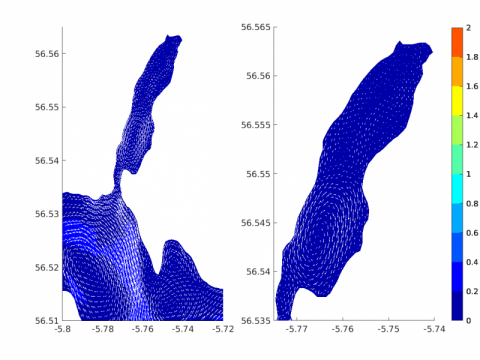General flow characterisation
A good qualitative description of the flow and physical characteristics within a region is critical to understand the biological environment. The Scottish Shelf Model (SSM) is able to highly resolve small – and regional – scale flow patterns which would be impracticable and expensive to observe directly and can characterise areas more accurately than traditional tidal stream atlases. One example of this is the model output recently provided to those planning oyster restoration work in Lochaline, where a good description of the tidal flow in and around the sea loch can help explain the occurrence of patchy oyster beds and the observed transport of shell fragments.
The SSM flow fields have also been used to help explain salmon smolt migration trajectories at sea, in combination with acoustic array data (Newton et al., 2021), and to provide new insights into how salmon smolts navigate Scottish coastal waters on their way to their feeding areas in the open seas (Ounsley et al., 2019).


